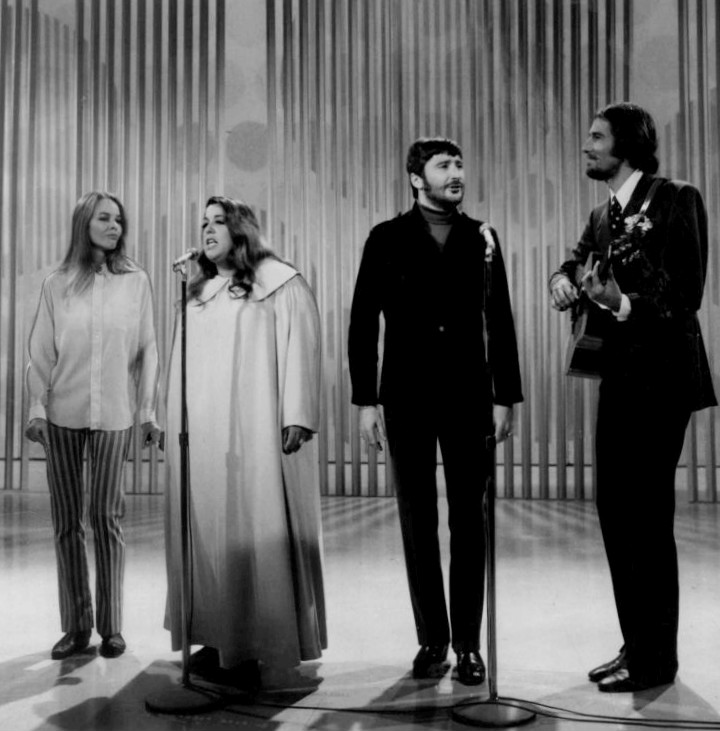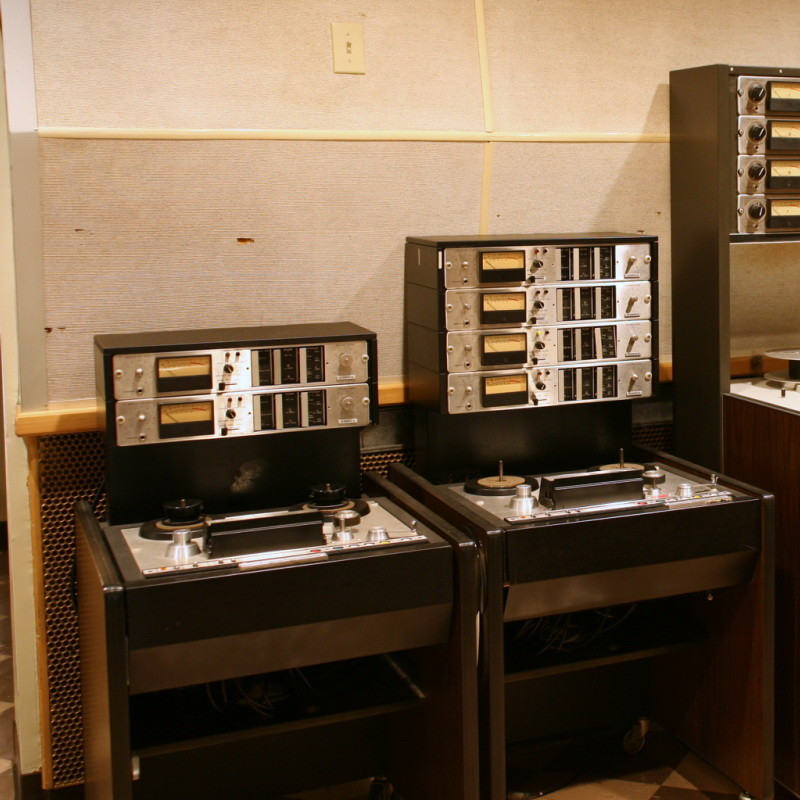Introduction

Between 1965 and 1968 the Mamas and Papas were recording many top 10 hits. Some of these hits included songs like California Dreamin’, Monday Monday; Dedicated to the One I Love, and many more. Their sonic quality is still amazing even by today’s standards. Consider for example the technology they had to work with. The photo at left (L to R) Michelle Phillips, Cass Elliot, Dennis (Denny) Doherty, and John Phillips on the Ed Sullivan show in 1968.
“Whoa, wait a minute man, why are you talking about these Mamas and Papas instead of, like, the Beatles?” Well, there are several reasons for that The first is that Cass Elliot and I share the same birthday, except she was several years older than me. The second is that I share the same first name of Dennis with Dennis Doherty; he was the first other Dennis that I knew of. Finally, in addition to making full use of the 4-track magnetic recording machine, they also took full advantage of another little known device of the day, the “Pan” knob. Pan was becoming fully realized in the 1960’s and they make full use of it, just listen to the introduction to to the song Monday, Monday and you’ll see what I mean -hard left, hard right, straight-up center. We are talking hard-pans. Besides, the Mamas and Papas were really groovy and far-out, man.
To the right is a Camtasia video with the introduction to the song Monday, Monday. I created it showing the results of hard panning using Adobe Audition.
Back in the mid 1960’s true multi-track recording was still considered a novelty, although some stereo had been recorded since the 1950’s Indeed the Mamas and Papas and some other groups of-the-day initially didn’t know what to do with such technology. Additionally, like some other groups of-the-day, the Mamas and Papas quickly realized the capabilities and full-potential of a “4-Track” multi-track tape machine could do. So, what could such technology do?
Prior to the 4-track there was a 3-track which was quite popular and gave some of the first stereo recordings. But it was the mid-sixties and the 4-track that gave birth to the way we mix most music today. In fact, you can still see remnants of the early workflow style in today’s ultra modern studios setups -both professional and home.
A Connection Between the Way it Was and the Way it Is
Back in the day, in many respects things were done similarly to the way things in a recording studio are done now -yes, that includes home studios. Let’s take a look and see the similarities in design.
In the analogue days you had a recording console, a multi-track tape machine(s), lots of effects, like compressors, reverb, gates, etc., patchbays, and a lot of microphones. all of these things were hardware. Today, you have patchbays and microphones, but a lot of everything else is now in your computer. In fact, you can have an entire virtual symphony orchestra in your computer. Connections to your computer from microphones, keyboards guitars et cetera is handled by a device called the Digital Audio Interface. We’ll cover the Audio Interface in more detail in the next lesson.
The next major component in the DAW is the computer. The computer has, in many instances, replaced much of the older gear that was needed to make up a recording studio. Now, things like the recording console (Lesson 6) are optional. In addition, you no longer need a multi-track tape machine because, your computer can record audio tracks and in most instances, a lot of audio tracks. Effects are an interesting item because most hardware effects can be created in the computer by what are known as plugins. For the most part, plugins are just software versions of music hardware, like compressors or limiters, for example. However, plugins can also be virtual instruments which is how you can have a full symphony orchestra inside your computer.

Dennis and the Ampex 440 Tape Machines
Hey Dennis! What’s with the trip down memory lane? Well that’s a very good question. But, before I get into the why of memory lane, let me tell you about these old tape machines.
These machines are Ampex 440 machines. There is a 2 track and a 4 track and they were state of the art and high end quality. I learned on machines very similar to those seen in the image and that was in 1981 and those Ampex machines still produced quality music. Back then, we edited with a razor blade and an “Edit All” splicing block. Now, why am I telling you this? Because when I decided to get back into audio production, everything had shifted from analogue to digital in about a decade. So, when I started again, I had to learn a lot of new things and a lot of the information I learned was completely foreign to me. On the other hand, a lot of the information was the same as what I learned in the analogue days of recording. True, we didn’t have digital recording and editing like we do now, but the information I had learned back then played a crucial role in helping me learn all of the new equipment and technologies that I use today. How does that apply to you?
Assignment and Quiz
I told you a story about how some of my past recording experiences helped me make the transition to the digital recording age because I was able to build on the knowledge that I already possessed. Now, I want you to tell me how something from you musical past has helped you in this class. For example, many of you are musicians, so you have been exposed to a lot if different musical instruments. Thus, it is possible that some of your musical past has either helped you currently or helped to foster a desire to learn more about audio production. But Dennis, what’s the quiz part?
Well, for your quiz, while writing your paper, you are actually quizzing yourself. You are having to draw a connection from you past that connects you to the now -the present, with regard to audio production. To do that realistically, is not very easy and it will require a lot of reflective thought. The paper only needs to be about two or three pages in length. You may submit to me by email.
Lesson Summary
As you can see from your reflection experience, old is new again. We often think that we won’t use something in our brains so that information goes to sleep until at some point in the future when we find we are drawing on it without even realizing that we are. It’s interesting because I as I glanced at some of your papers I did actually see that happening, you were calling on the past to connect with the present. It’s kind of magcial, isn’t it? In any event, I hope you enjoyed this recording philosophy lesson.
